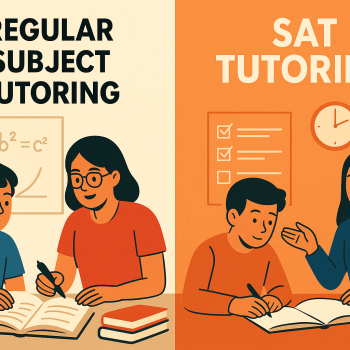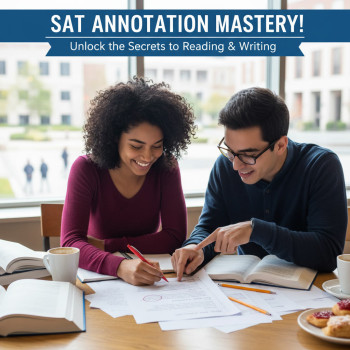The surprising link between SAT prep and AP/IB success
When you think of SAT prep and Advanced Placement (AP) or International Baccalaureate (IB) exams, you might picture two separate worlds: one is a standardized college-admissions gauntlet and the others are rigorous, class-based end-of-year tests. But the truth is more encouraging — these pathways overlap in powerful ways. Skills sharpened for the SAT often translate directly to stronger AP and IB performance. I’m going to show you exactly how, with concrete examples, a sample study plan, and practical tips you can start using today.
Why the overlap matters: skills, habits, and mindset
At the heart of both SAT prep and AP/IB study are three essentials: content knowledge, critical thinking, and exam craft. That means the time you invest in one often pays dividends in the others. Think of SAT practice as cross-training — it builds stamina for complex reading, precise writing, and efficient problem-solving. For students juggling demanding class loads, recognizing this synergy can turn seemingly duplicated work into efficient, high-impact study.
Shared cognitive skills
- Close reading and evidence-based reasoning: Vital for SAT Reading and AP/IB essays.
- Problem decomposition: A must for SAT Math and higher-level AP/IB math and science problems.
- Time management and pacing: Useful for 3-hour IB papers or timed AP sections.
Shared test-taking habits
- Translating questions into manageable steps.
- Flagging and revisiting tough items instead of getting stuck.
- Reviewing errors strategically — focusing on patterns, not just answers.
Section-by-section: how SAT practice aligns with AP/IB skills
Reading: comprehension, synthesis, and evidence
Both SAT Reading and AP/IB exams (History, Language, Literature, Social Sciences) demand reading beyond the surface. The SAT trains you to identify thesis, tone, and evidence quickly — skills you can apply to AP Document-Based Questions (DBQs) and IB Paper 2 essays.
Example: when you practice SAT passage-based questions, you repeatedly ask: what is the author really arguing, and where’s the evidence? That habit transfers. On an AP Lang exam, instead of searching blindly for quotes, you’ll have a mental checklist: main claim, rhetorical devices, evidence, and how each piece supports the thesis. That checklist speeds up annotation during timed exams.
Writing and language: clarity, economy, and argument
SAT Writing & Language focuses on concision, grammar, and precise word choice. AP English and IB assessments reward similar skills — clear thesis statements, well-organized paragraphs, and controlled tone. Practicing to make every sentence do work on the SAT carries over to essays where economy and clarity win points from graders.
Math: foundations, fluency, and creative problem solving
SAT Math covers algebra, functions, geometry, and data analysis. These fundamentals underpin many AP subjects (Calculus AB/BC, Statistics) and IB Math tracks. SAT problems encourage translating wordy questions into equations and finding efficient solution paths — a habit that helps when tackling multi-step AP or IB problems under time pressure.
Science and data interpretation
While the SAT doesn’t have a dedicated science section, it emphasizes data interpretation and experimental reasoning in passages and math questions. Those skills are central to AP Biology, Chemistry, and IB sciences. Regular SAT practice with charts, graphs, and experiment descriptions improves your ability to parse figures and apply quantitative reasoning in science exams.
Concrete examples: transfer in action
Let’s look at two real-world scenarios that show how an SAT habit can change AP/IB outcomes.
Scenario 1: A better DBQ from SAT evidence practice
Case: Maya practices SAT Reading and focuses on annotating evidence efficiently — underlining topic sentences and jotting quick labels (“cause,” “contrast,” “evidence”). On her AP US History DBQ, she enters the essay with a practiced routine: skim documents to tag perspectives, then outline a thesis that groups documents by argument type. The result: faster organization and a tighter essay that uses evidence instead of summary.
Scenario 2: From SAT word problems to AP Physics gains
Case: Jamal consistently works SAT Math word problems that require converting text to algebraic expressions. When he approaches AP Physics free-response questions, he quickly sets up variables, draws simple diagrams, and writes equations before crunching numbers. That early structuring avoids common mistakes and often leaves time for a concise check of units and sign conventions.
Study plan synergy: sample 10-week schedule
Below is a balanced plan that intentionally combines SAT practice with AP/IB study. The goal is sustainable progress — not burnout. This schedule assumes continuing school commitments and aims for 8–12 hours per week of focused work outside class.
| Week | SAT Focus | AP/IB Focus | Time per week |
|---|---|---|---|
| 1–2 | Diagnostic test & question-type review | Identify weak content units; review core notes | 8–10 hrs |
| 3–4 | Timed Reading sets; grammar mini-lessons | Essay structure practice (DBQ/IA outline) | 9–11 hrs |
| 5–6 | Targeted Math modules; calculator/non-calculator strategy | Problem sets in corresponding AP/IB units | 10–12 hrs |
| 7–8 | Full-length practice test (review errors deeply) | Timed practice essays and lab report review | 10–12 hrs |
| 9–10 | Final review & pacing drills | Practice exams and cohesive revision | 8–10 hrs |
This plan is flexible. If you’re preparing for multiple APs or IB courses, rotate the AP/IB Focus topics weekly so each subject gets attention. The SAT Focus also cycles between reading, writing, and math so you develop balanced skills rather than a single strength.
How to practice deliberately: techniques that serve both exams
Deliberate practice beats hours logged. Here are techniques that work for SAT, AP, and IB alike.
- Error logs: Keep a running record of mistakes categorically (vocabulary, algebraic setup, misread questions). Review weekly for patterns.
- Mini-explanations: After solving a problem, write a one-sentence explanation of why the correct answer is right. It reinforces conceptual clarity for essays and quant problems.
- Timed micro-sessions: Break practice into short, intense bursts (25–40 minutes) followed by a 10-minute reflection on strategy and errors.
- Active annotation: For passages or primary sources, label author purpose, audience, tone, and supporting evidence instead of underlining indiscriminately.
Data-driven improvement: what to measure
Improvement becomes real when you track metrics. Here are key indicators to monitor across your combined prep.
- Accuracy by question type (e.g., conditional logic, function interpretation, rhetorical analysis).
- Average time spent per question or per passage.
- Essay score trends against rubric points (thesis, evidence, analysis, organization).
- Retention of core formulas and vocabulary over two-week intervals.
| Metric | Baseline | Goal (8 weeks) | How to measure |
|---|---|---|---|
| Reading accuracy | 70% | 85%+ | Timed practice passages per week |
| Math problem setup errors | 5–7 per test | ≤2 per test | Error log and rework sessions |
| Essay rubric score | 3/6 | 5/6 | Rubric-scored practice essays |
Example exercises that double as AP/IB prep
Here are short, practical exercises to fold into weekly study.
- Passage pair comparison (20–30 min): Pick two short passages (a 19th-century speech and a modern op-ed). Write a paragraph comparing author purpose and use of evidence. This helps for SAT synthesis questions and IB comparative commentary.
- Quick data set analysis (20 min): Take a graph from a science class or a history table and write three claims that the data supports, noting limitations. Perfect for SAT data questions and AP Science short answers.
- Two-step math drill (30 min): Practice 10 targeted problems that require setting up equations from text. Time yourself, then write a one-line explanation of each answer to cement reasoning.
Personalized tutoring: making the overlap intentional
Succeeding across SAT, AP, and IB isn’t just about practice volume — it’s about alignment. That’s where personalized tutoring can make a big difference. Imagine working with a tutor who maps your SAT weaknesses directly to the AP or IB content you’re studying. For instance, if your SAT diagnostics show you struggle with evidence-based reasoning, your tutor might pair targeted SAT passages with AP DBQ practice. This linkage converts abstract weaknesses into practical, cross-exam solutions.
Programs like Sparkl’s personalized tutoring specialize in one-on-one guidance, tailored study plans, expert tutors, and even AI-driven insights to track progress. When a tutor understands both the SAT question types and your AP/IB syllabus, they can scaffold lessons so every minute of study advances both goals. That kind of tailored overlap saves time and reduces stress — two outcomes every student appreciates.
Common pitfalls and how to avoid them
Students often make the same mistakes when trying to combine SAT and AP/IB prep. Here’s how to sidestep them.
- Pitfall: Treating SAT prep as separate flashcards. Fix: Integrate — for reading, annotate class texts like SAT passages; for math, solve school problem sets with pacing in mind.
- Pitfall: Chasing only practice tests. Fix: Use tests to diagnose, then spend focused sessions on the weak skill rather than repeating full tests without reflection.
- Pitfall: Ignoring rubrics and scoring criteria. Fix: Score essays and lab reports against official rubrics; ask a tutor or teacher for targeted feedback.
Real student story: combining prep for bigger gains
Jake was a junior juggling AP Calculus, AP US History, and SAT prep. He felt stretched thin: doing practice tests but never improving on AP FRQs or his SAT reading. With a tutor, he switched strategy. They used SAT timed passages to build quick evidence-tagging skills and applied the same tag-and-outline approach to his DBQs. For math, they practiced SAT-style word problems that mirrored the AP Calculus concept questions, focusing on equation setup first. Over three months, Jake’s SAT Reading score rose significantly and his AP scores improved too — not because he spent more hours, but because his practice became purposefully aligned.
Putting it together: a monthly checklist
Use this checklist each month to keep your combined prep on track.
- Take one timed full-length SAT every 3–4 weeks and review thoroughly.
- Write two timed essays (SAT/College Essay style or AP prompts) and score them with a rubric.
- Rotate through AP/IB subjects with focused problem sets (2–3 short sessions per subject).
- Meet with a tutor or study partner weekly to get feedback on error patterns.
- Update your error log and convert two recurring errors into explicit strategy rules.
Final thoughts: efficiency, confidence, and long-term payoff
Preparing for the SAT doesn’t have to be another separate mountain to climb. When you align SAT practice with AP and IB study, you create cumulative momentum: skills sharpen, time is used smarter, and confidence grows. Whether you choose to work on your own, with teachers, or with personalized tutoring like Sparkl’s one-on-one guidance and AI-driven progress tracking, the key is intentional practice that links question types to class content.
Think of your study time as a multipurpose investment. Every carefully annotated passage, every timed math setup, and every scored essay should pull double duty — advancing both SAT readiness and subject mastery for AP/IB exams. That way, come test day, you’re not just prepared; you’re in command.
Image ideas


Next steps
Start small: pick one recurring weakness from your error log and design two weekly activities that address it — one SAT-style and one AP/IB-style. If you want structure and expert feedback, consider a personalized tutor to design a tailored study plan. With the right habits and focused alignment, you’ll find that SAT prep is not extra work — it’s an engine for broader academic success.
Good luck, and remember: quality practice builds skills that travel. Study smart, stay curious, and let your improvements compound across every exam you take.



















No Comments
Leave a comment Cancel